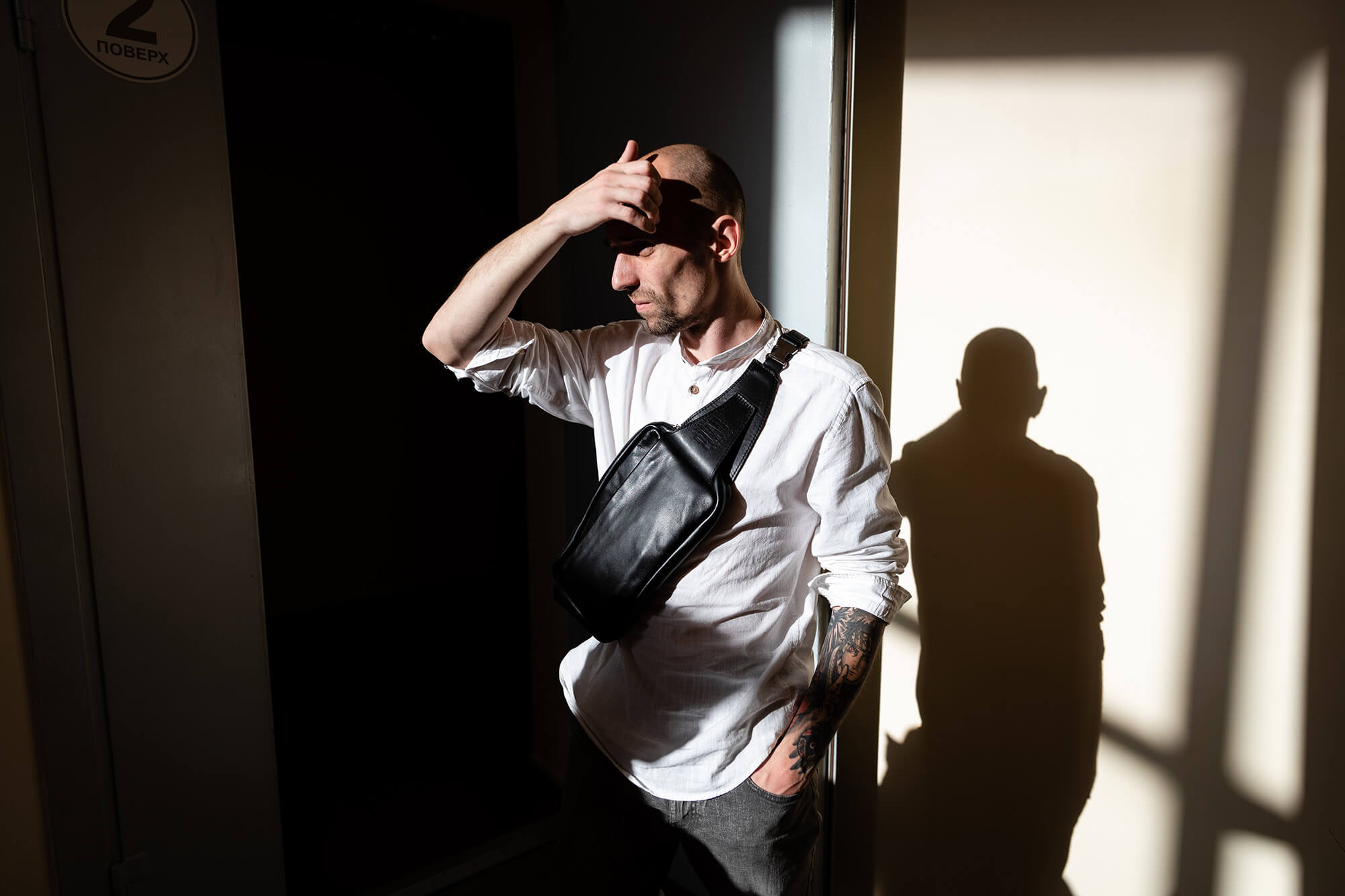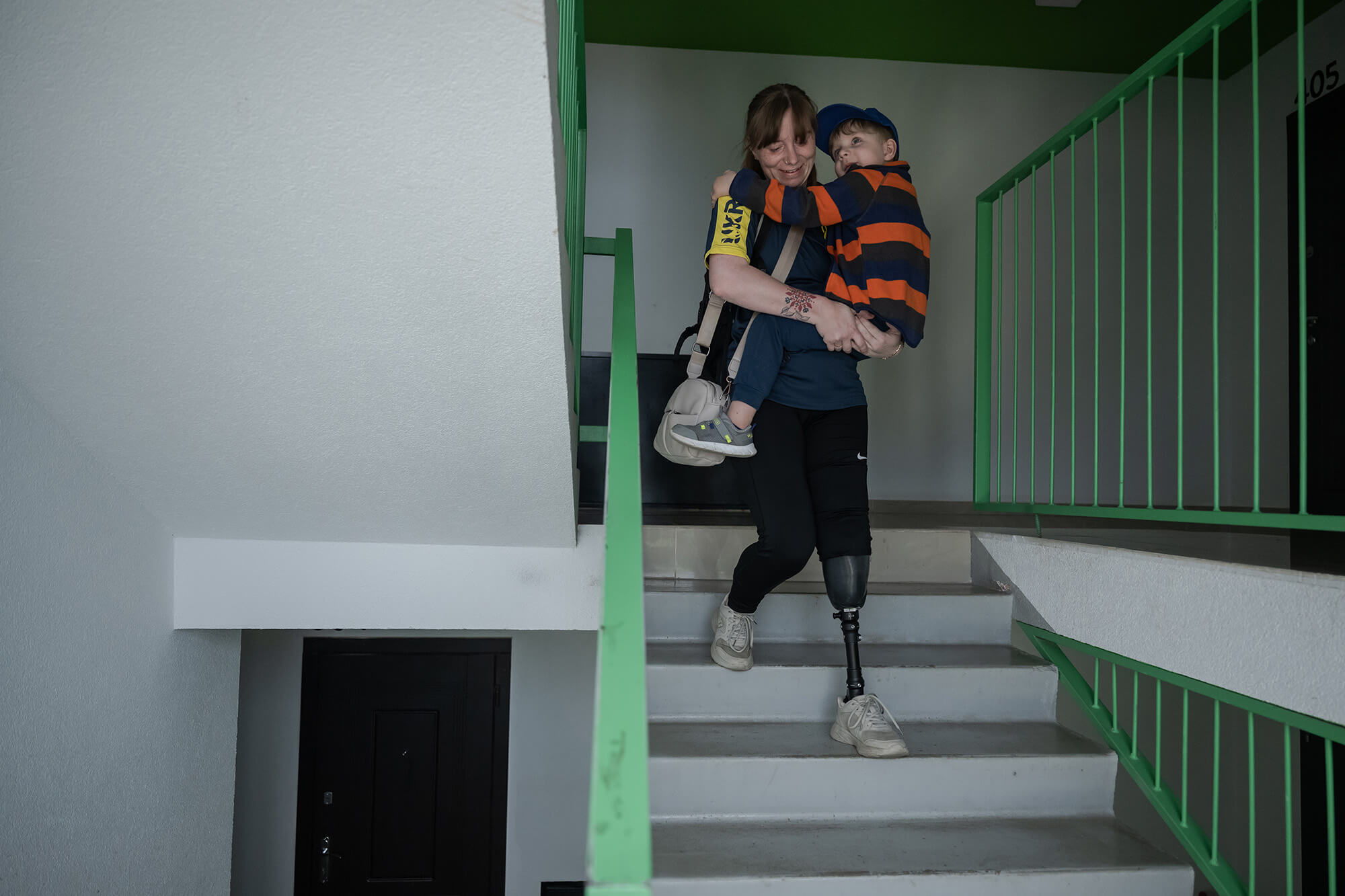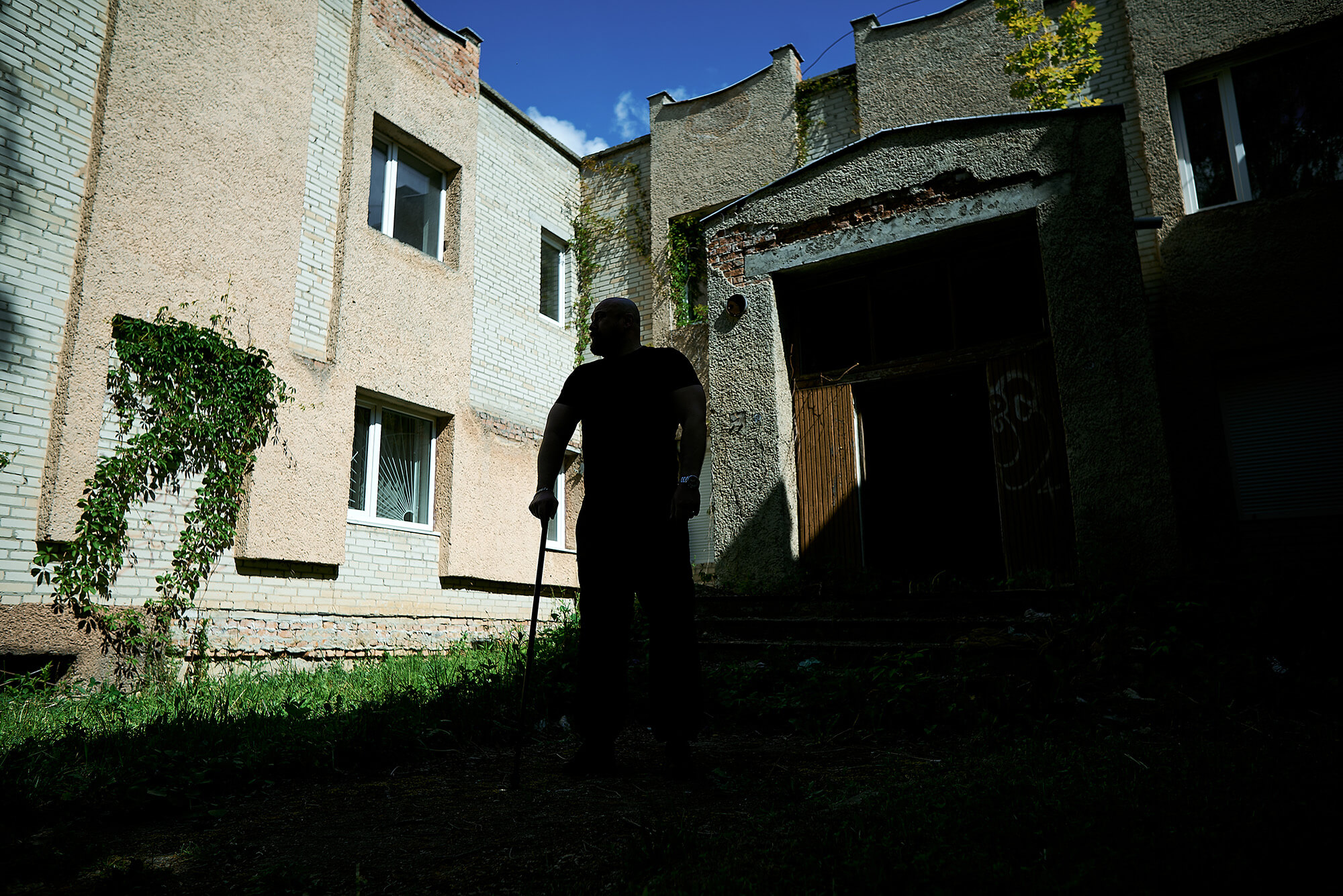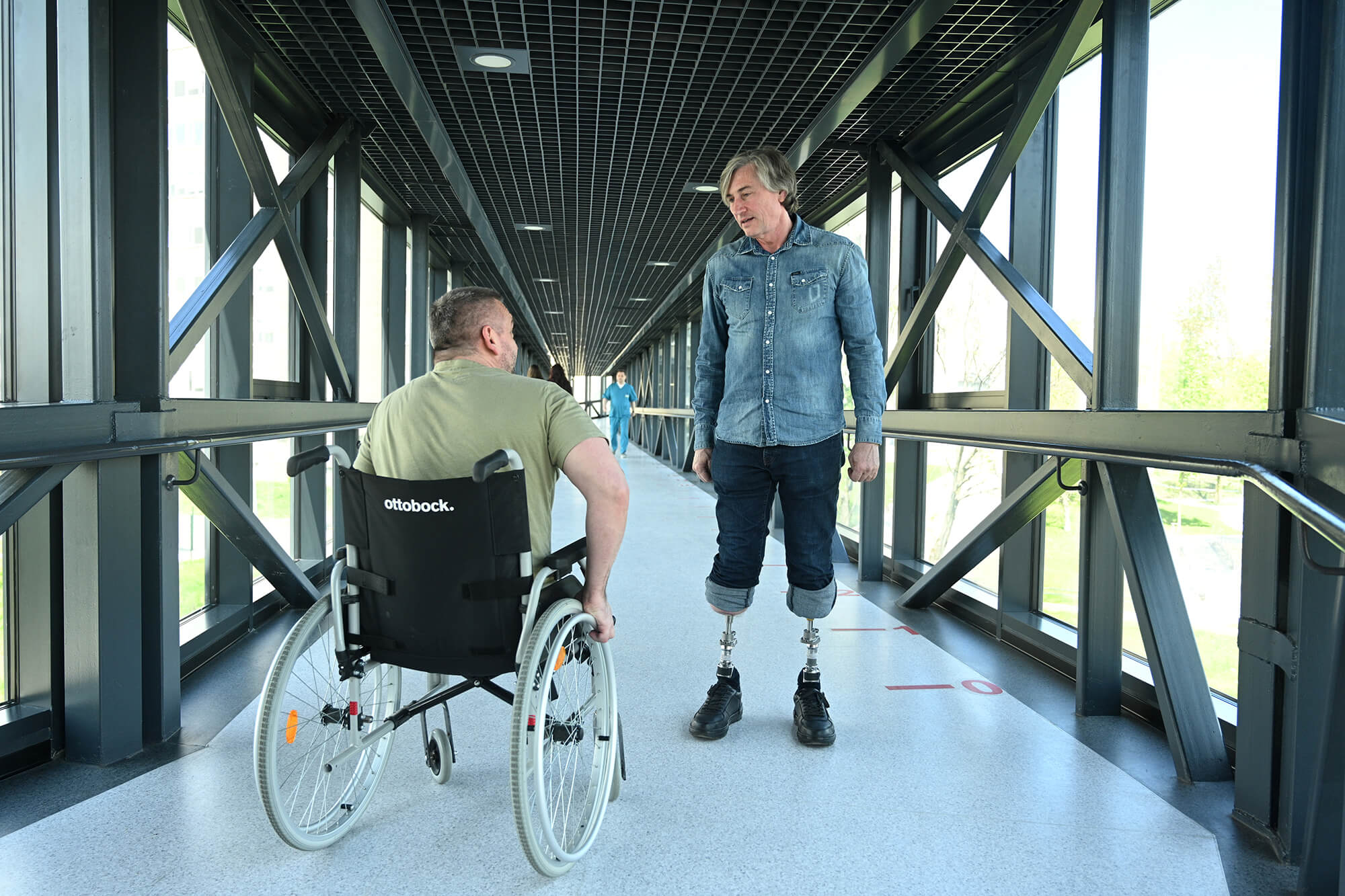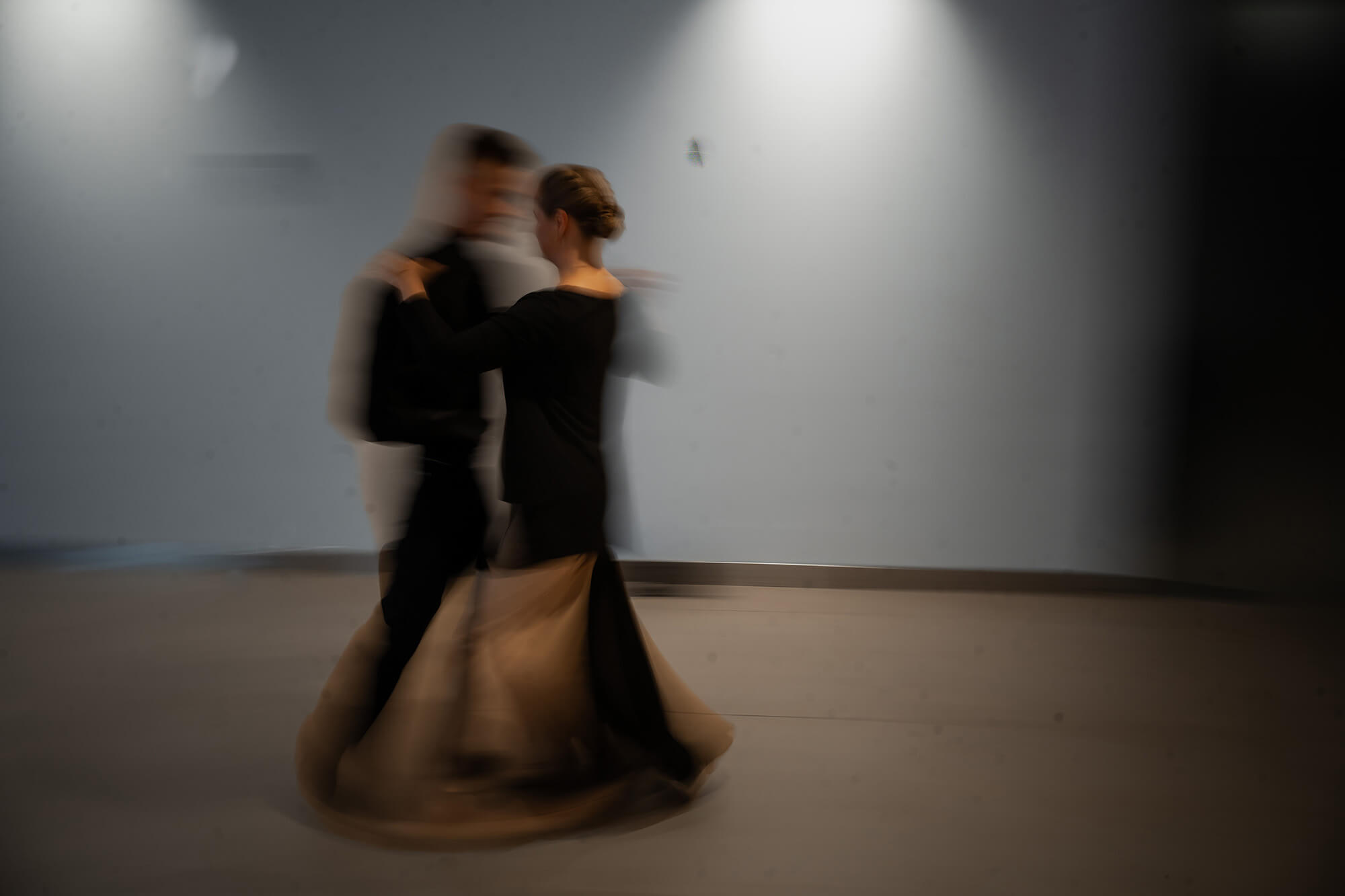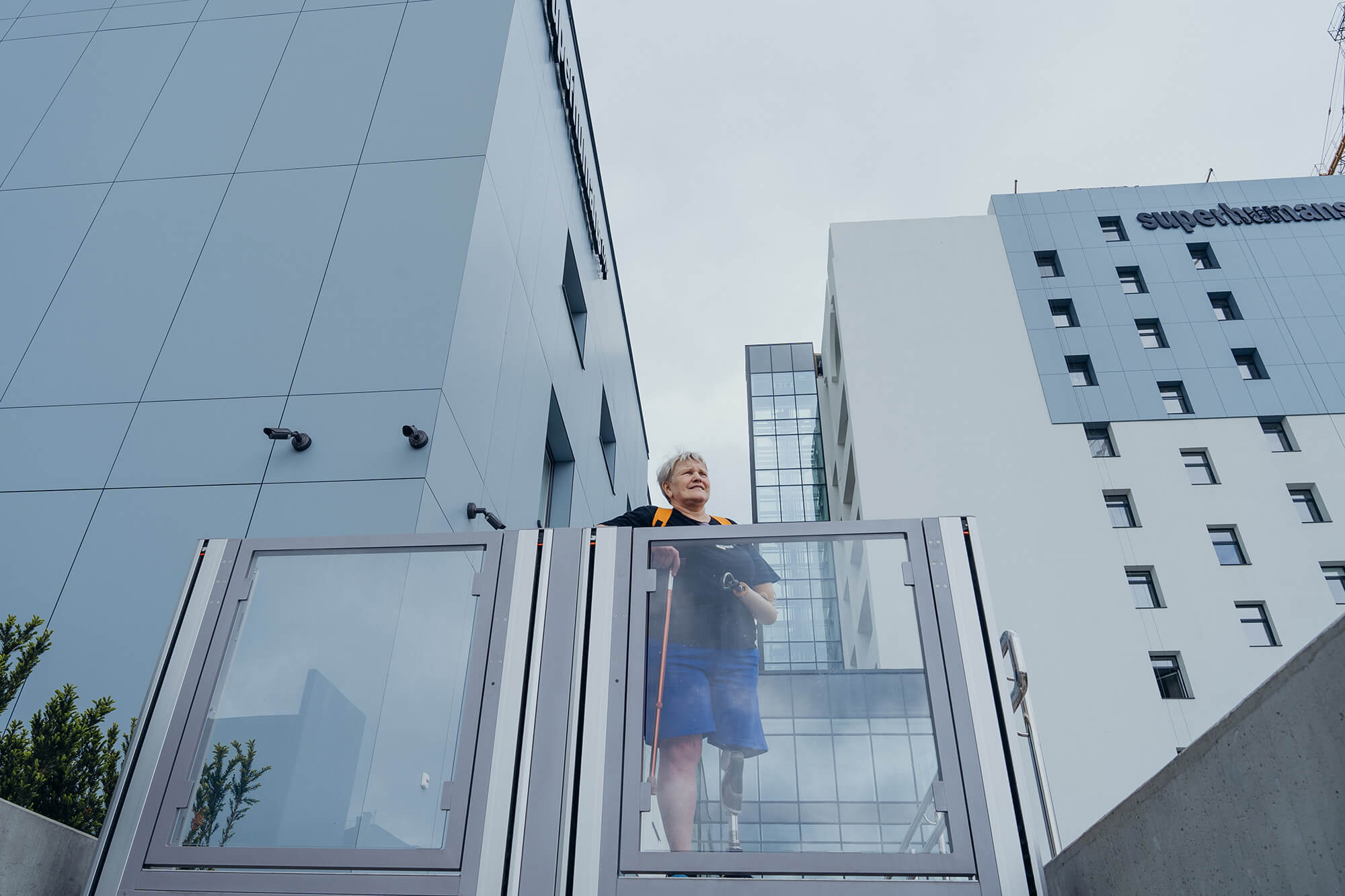
A house above all others
Two events in the history of the nine-story building at 44 Bohuna Street in Chernihiv are echoes of one another. The first occurred in April 1986 when the Chornobyl Nuclear Power Plant reactor, which the Soviets insisted could not possibly explode, burst open. The second, took place in March 2022 when a Russian unguided bomb, which the Russians insisted they did not launch, landed right outside its windows.
For more than thirty years, people who had never had a home of their own, or had lost it,have lived in this building. That is why they no longer can or want to leave their home.
How a house grows
For a brick nine-story building to rise up in the center of Chernihiv, its wooden single-story predecessors, which were unique to the city for the past two centuries, had to be mowed down like grass. The modern world demanded that people settle tighter and higher.

So, in the 80s, standalone houses—family wooden estates of Chernihiv residents—began to be demolished. It didn’t matter whether the houses belonged to a family for centuries or were taken away by the Soviets and redistributed among the new working class.
This was happening all around the city. Today, wooden history of Chernihiv makes itself known on certain streets, nooks and crannies between city bends, and lush fruit orchards that dot the neighborhoods. On Lukyanenko Street, divided by a gray river of cars, people’s homes stare at each other: on one side, there are brick and panel giants, on the other, fragile wooden cottages.
On the site of the nine-story building at 44 Bohuna Street, there once stood a small house. When the construction workers demolished the house, the owners were forced to relocate to one of the apartments in the new building. The residents had no choice. The apple trees in the yard of this multi-story building came from their garden. The owner had been pruning them until the day he died. Now his relatives are abroad—they have left. So, for now, no one can share the whole story.
Before the first explosion
Our eyes tend to turn to great tragedies. And often, the lives of people at the epicenter become reduced to the moment of calamity. But the disaster does not define their whole lives. They were not defined by it in the past and will not be in the future.
A minute before the Russian bomb fell, 83-year-old Nina Mykhailivna laid down on the large couch in her apartment at 44 Bohuna Street. Russian forces were close to Chernihiv, attempting to surround it.
All journalists who came and will continue to come here ask Nina, “Where were you at that very moment?”—stressing the last words with annoying sympathy.
So, let’s allow Nina to first tell the story of her life—a different, bigger, longer life than the moment she’s been asked about repeatedly.
Nina and her future husband were born in the town of Krolevets in the Sumy region. When her husband graduated from the military academy, they got married and went to Soviet Azerbaijan to a military town. They took a train via Kharkiv to Baku, and then to Astara, right on the border with Iran.

The last few kilometers of the journey stretched along the sea, and the air was hot and humid. The 19-year-old girl in her fall coat—who had left home in cold October—felt excitement in her stomach. As she stood on the platform she could have easily been mistaken for a local woman if not for her coat,unsuitable for such heat. She had dark hair, eyebrows, and eyes, resembling local women more than other wives of Soviet soldiers. Nina carried a suitcase with clothes. She also brought two bowls, two spoons, and two forks. And her own mattress.
The young couple was given the keys to a small wooden house. They crossed the threshold, and a few soldiers followed them in, carrying furniture. A table, two chairs, a bed—everything was new but did not belong to them. There was no need to become attached to anything, as the purpose of these military towns was thatone wouldn’t live there forever.
In a few years, the journey along the sea brought them back. This time to cool, damp Lviv. More understandable but still quite foreign to Nina, who came from the northern part of Ukraine.
Again, a few bowls and forks, a room rented from a local woman named Olena, and Olena’s kind advice: “At the market, be sure to ask for tsybulia, not luk.” Still, sometimes Nina would forget and ask for luk, to which older women would call her moskal’ka, a derogatory term for a Russian speaker
“I wasn’t a moskal’ka, but I was a Soviet person. It’s only now, when the war began, that I understood everything,” she reflects half a century later.

And then life took them to the Ural Mountains. Taiga. They settled in a typical Russian wooden house, which they called a barrack. The frost crackled, and so did the trees from the cold.
“No, we didn’t have anything of our own there either. That came later in Kazakhstan. Baikonur. They were building a spaceport and sent my husband there. They gave us an apartment—so large and empty, like a church. They paid a bit more, so we started to settle in. We got sideboards, a round table, a wooden carved bed, dressers, and chairs upholstered in suede. We lived there for twelve years, and my husband was supposed to retire there.”
“He was finishing his service. Finally, we could settle down somewhere. We always wanted one thing—to return to Ukraine. We always said that.”
But Nina might not have ended up in Ukraine if she had chosen a different home 37 years ago. They were initially offered a house near Moscow. The people who made the offer were quite persistent. A different choice could have taken Nina and her husband far away from the tragedy that would happen at 44 Bohuna Street.
The bomb wouldn’t have fallen near her, but the plane that dropped it would have taken off from where she would have lived. But Nina dug in her heels—she would only go to Ukraine.
“In 1986, we were told that housing was being built for military personnel in Chernihiv. We jumped at the opportunity. We had never been there, but it’s close to our native Sumy region, so we didn’t hesitate.”
Then, one night, a reactor at the Chornobyl Nuclear Power Plant exploded in Ukraine.
The first explosion
Initially, the nine-story building at 44 Bohuna Street in Chernihiv was intended for people in the military. Chernihiv is still referred to as a city of “retirees”—military families from all over the USSR that settled in different neighborhoods after retirement.
Here, they bought their own cooking pots, tables, and beds for the first time, things they would never have to leave or pass on to others. When the first section of military housing was almost finished, and the building was given the number 44, the reactor at the Chornobyl Nuclear Power Plant exploded. The state said—oh well. Not only military personnel would be resettled there. Residents of Pripyat, which was built for Chornobyl workers, all had to be evacuated following the nuclear catastrophe, would also be dispersed among the nine floors.

This is how the building was settled by the people who already had a home, which had become a ghost town, surviving only in the memories and conversations on every floor of the new building.
Older people remember how at first the two groups—the military and the evacuees—did not get along. All because military families had already chosen their apartments when suddenly everything started to change. There were arguments in the yard, and at some point, things were even thrown out of windows. Eventually, people got used to each other, each with their own life story. Halyna, the wife of a liquidator, Zoya—a paramedic from Pripyat, Nina—the colonel’s wife.
And the house? The house became a home for all its new residents, with all their previous lives inside of it.
The second explosion
Amidst the gray smoke and the wail of sirens, there were moans and screams.
“Olezhyk, Olezhyk, I’m dying, I’m dying.”
“Help,” a piercing scream.
“Help,” a piercing whisper.
“Olya, just keep talking, tell me something.”
“My God!” — a scream.
“My God!” — a wail.
“We can’t get out!”
“Is anyone alive?”
“Help! A woman is trapped in here!”
At noon on March 3, 2022, a Russian plane dropped at least six unguided bombs on a residential district in Chernihiv. The city was already on the brink of being surrounded, and Ukrainian forces were defending it.
This happened right in the city center: residential buildings, a cardiology hospital, a kindergarten, a school, pharmacies, a grocery store. The strike was unexpected because it was the first time bombs targeted a city. And the target they chose had nothing to do with the military.

One bomb fell on a seventeen-story building, leaving a huge black crater. Another, hit a nine-story panel building, causing an entire section to collapse, burying dozens of people in their apartments. Some people were killed near a pharmacy across the street. Another bomb struck the cardiology center.
Some families of Soviet military personnel couldn’t fathom it: a Russian plane,
Soviet FABs (high-explosive aviation bombs), created by the country they had served. You can still hear their confusion even now—some understanding, but still a state of shock. Their lives were so deeply connected with the Soviet military that it was difficult for them to accept that the bombs were Soviet and the planes were Russian. Even now, a year and a half since the attack, you still hear, “when that happened,” “when that bomb fell,” “when the disaster occurred.” They have trouble saying that this disaster was caused by Russian bombs. These bombs took at least 47 lives that day.
After the explosion
It took a year and a half to restore the damaged houses, at least partially. And it’s not the end.
Two sections of the nine-story panel building haven’t been restored—it’s impossible to do. Eventually, they will just be demolished. Those who survived—and most victims died here—settled in dormitories or moved in with their relatives.
The house at 44 Bohuna Street didn’t collapse entirely, but it lost its walls, windows, and entire apartments. The bomb landed right near Halyna’s window —a pensioner and the widow of a Chornobyl liquidator. Halyna and Petro’s apartment, which they were given in 1986, didn’t withstand the Russian bomb. Almost all the walls are gone, except for the ones that separated the apartment from the rest of the building. All the furniture, paintings, books, and the beloved bed from the Drohobych Furniture Factory were reduced to rubble.
The building began to return to life only when Chernihiv region was liberated and the siege ended. By summer, residents started to move back into the building.
I have been coming to this house for a year now, and I’ve noticed changes in it. Peopleget together, get to know each other all over again, and share their stories with each other.



The restoration of the building at 44 Bohuna Street is still incomplete. The city has only taken on the work for the first four floors. Halya got her walls back. The home is still bare, empty. I remember Halyna sad and worried, in her orange autumn coat, which she wore during the winter. She took it out from under the rubble and affectionately called it her “wounded coat” because of the holes left in it by small bomb fragments. These days, Halyna wears flowery dresses again.
The city did not repair apartments, walls, or windows for people living above the fourth floor. A Czech charity installed windows and doors, but the residents did everything else on their own. Some took out loans in order to put up walls between rooms and apartments—because they used to have three private rooms and now had six that they shared with their neighbors.
People here have relied on themselves for many things. Restoration of the building became their job. The unequal conditions started to cause some tensions. People didn’t gather on the bench in front of the building anymore, chatting as they used to. The neighbors from the upper floors were offended that they had to put up the walls in their apartments themselves, without any help or financial support. Help was given to the first few floors but not to the others. And all these inequalities caused by the city government undermined the communal spirit.
The people of this building are always looking for a way. When, in the first months after the blockade, residents didn’t have gas to cook meals, Olya from the third floor found an organization that brought them hot lunches. She was keeping an eye on every neighbor to make sure everyone had soup.
Those who couldn’t rebuild on their own looked for anyone who could help at least partially. Andin August 2023, a group of young people, including teenage girls, showed up at their building. They were unloading bricks from cars to lively music in order to build a wall in Olesya’s apartment. Olesya had left Pripyat when she was still a child.
This initiative was led by the Chernihiv branch of BUR (Building Ukraine Together), a volunteer organization that has been organizing collective work efforts by young people in eastern Ukraine and other parts of the country for years. Now they have even more work—and even more volunteers. In August, they helped a family from the ninth floor, and they already have requests from other apartments as well.
Nina is staying
Nina spent the second half of her life in this building. She arranged everythingthe way she wanted it. Her bed and wardrobes—exactly the kind she envisioned—were transported in containers by plane. Nina had dreamt of arranging her own space in the best way possible. She felt happy because she had finally found her place.

February 2022 came as a surprise to Nina, despite her attempts to conceal it. Russia started a full-scale war. Nina, a former Komsomol member and party activist who had traveled through one third of the USSR, was shocked by this blow delivered by the successor state of the USSR. It was not the same for her husband, a Soviet military man, because he has been gone for ten years.
Nina didn’t leave or evacuate. She stayed at home with her fifty-year-old son. She went out to get some water and food but spent most of her time in her apartment on the fifth floor, watching the gray smoke rise over the city. There has never been such a gray spring. Not even gray, but the color of soot.
Then, the house shook, walls collapsed, and windows shattered.
Nina woke up in a damp, dim place. Sitting next to her were her son and a nurse, who was holding an IV bag since the hospital ran out of stands.
“Where are we?”
“In a bomb shelter of a hospital, mom.”
“When are we going home?” Nina asked, attempting to sit up.
“I don’t know, mom.”
Down there, in the basement, Nina wanted nothing more than to see her home as soon as possible.
Nina lives on the fifth floor, which means her windows and doors were installed, but she and her son had to do everything else. They repaired the walls, plastered them, and carefully reassembled the old bed that Nina and her husband had brought from Baikonur. It was wounded, just like Halyna’s coat, but survived and stands next to a large round table that Nina loves.
“We manage with some help and on our own. I still want to reassemble a cupboard, repair the wardrobes that got damaged, and put everything back the way it was, maybe even better.”
“Because I’m not ready to give up my home. It’s mine. And my life is in it,” says Nina.
And in response to life, Russia bombs, exhausting its new and old Sovietmunitions, revealing that there is no common beautiful past between Ukraine and Russia, only an eternal struggle to save ourselves and our land.

When Maryna from the first floor entered her apartment right after the strike, she thought it looked similar to when she first came here from Pripyat. Bare walls, coldness, dampness. Only back then, the apartment was empty, whereas now it was cluttered with shattered walls and furniture. She felt like she had no idea where to start, how to retrieve her life from the rubble. Then she and her husband decided to take apart the first wall. Now, a year and a half later, Maryna is already halfway to making her apartment feel like home again.
“I stood there and thought, maybe we should just leave it all and find another place. But then I looked around again. No, this is exactly what the enemy wants—to take away our freedom. I won’t give up my home for the second time. I have the strength to reclaim it.”
***
«Healed Lands. Зцілені землі» is part of «De-occupied: Stories of the Liberated Territories», a project supported by the Heinrich Böll Foundation’s Bureau in Kyiv. Its goal is to show that Ukrainians are not giving up or waiting for outside help but are bringing life back to their communities and homes. Even though the war is still raging.
In these texts, we report on the renewal of life in Ukrainian territories that used to be temporarily occupied or sieged by the Russian army. We publish stories based on personal experiences of war — about people who find the strength to go on living and pass that strength on to others. About people who lead by example, inspire others, andhelp villages and towns recover from war through their initiatives.
Have read to the end! What's next?
Next is a small request.
Building media in Ukraine is not an easy task. It requires special experience, knowledge and special resources. Literary reportage is also one of the most expensive genres of journalism. That's why we need your support.
We have no investors or "friendly politicians" - we’ve always been independent. The only dependence we would like to have is dependence on educated and caring readers. We invite you to support us on Patreon, so we could create more valuable things with your help.
Reports130
More